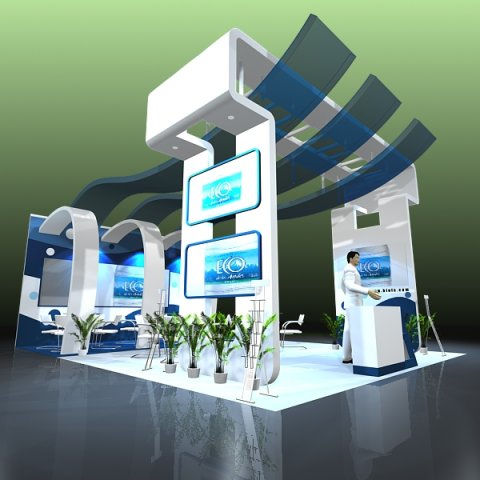The Psychology of Space in Cologne Exhibitions
- Elisa Johnson
- Aug 5
- 4 min read

In the exhibition world, making a strong first impression is crucial. The moment a visitor steps into a booth or walkways of a trade show in Cologne, their subconscious mind begins to process space, layout, colors, and even distance between elements. This spatial experience greatly influences how attendees interact with brands and retain information. While product quality and service matter, the way space is used can either encourage or discourage visitor engagement. Exhibitions in Cologne, renowned for their culturally rich and design-centric nature, have increasingly integrated spatial psychology as a fundamental aspect of booth and stand design. At the heart of these engaging experiences lies thoughtful design guided by professionals, often with input from an experienced Exhibition Stand Builder in Cologne, who understands how psychological principles can be integrated into structural planning.
Understanding Spatial Psychology
Spatial psychology deals with how people perceive and interact with the physical space around them. In exhibitions, it takes into account how visitors navigate, pause, engage, and interpret the environment. Certain aspects such as crowd flow, visual hierarchies, proximity, and openness play a significant role in determining emotional responses. Exhibitors who leverage spatial psychology often see higher levels of engagement, brand recall, and dwell time.
In cities like Cologne—where exhibitions attract a diverse global audience—the importance of spatial planning becomes even more pronounced. A stand that appears cluttered or confusing may push visitors away, while one with a strategic spatial layout can evoke curiosity and comfort. The psychology of space isn’t about minimalism alone but about creating balance and intention in design.
Key Psychological Principles in Exhibition Design
Proxemics and Personal Space Humans require different levels of personal space depending on the context. When this personal space is invaded, discomfort arises. A well-designed stand ensures that visitors have enough room to move without bumping into each other or the furniture. By respecting these invisible boundaries, exhibitors create an environment that feels safe and welcoming.
Wayfinding and Navigation Clear and intuitive navigation helps reduce cognitive load. Visitors don’t want to figure out where to go next—they should be naturally guided by lighting, floor markings, or visual cues. Good spatial design incorporates pathways that lead the eye and the body effortlessly from one focal point to another, encouraging longer visits.
Color and Emotion Color plays a powerful role in influencing mood and perception. Cooler tones like blue and green can have a calming effect, while warmer hues such as red and orange may incite energy and urgency. When used thoughtfully, color can amplify a brand's storytelling. In Cologne, where design sophistication is high, color is often coordinated not just for aesthetics but also for emotional appeal.
Lighting and Depth Perception Lighting affects how space is perceived. Soft lighting creates a sense of intimacy in a space, while bright lighting can make it feel more open and expansive. Shadows and highlights can be used to create depth, draw attention to products, or subtly guide movement. Dynamic lighting is particularly effective in exhibition settings to emphasize transitions or create atmosphere.
Symmetry, Balance, and Visual Harmony Symmetry creates a feeling of structure and consistency that many people find appealing. However, asymmetrical designs with deliberate focal points can generate curiosity and movement. An effective stand strikes the right balance between familiarity and surprise, making visitors feel both comfortable and curious.
Cologne’s Unique Approach to Exhibition Space
Cologne is one of Europe’s leading exhibition cities, hosting internationally renowned events such as IMM Cologne and Anuga. These exhibitions often showcase the city's dedication to innovation, creativity, and operational excellence. Exhibition designers here frequently collaborate with psychologists, architects, and an experienced Exhibition Stand Builder in Cologne to ensure the space communicates brand values while also being mindful of how people experience environments.
Moreover, Cologne’s rich cultural backdrop encourages the integration of storytelling into spatial design. Whether it’s a furniture brand drawing from Bauhaus influences or a tech startup using clean, futuristic spaces, the layout of exhibition stands in Cologne is rarely accidental. Instead, it’s often a layered combination of functionality, emotion, and interaction.
Behavioral Flow: Turning Visitors into Participants
Another key element of spatial psychology is behavioral flow—the transition from being a passive observer to an active participant. Smartly designed booths encourage visitors to touch, explore, and converse. Interactive zones, product demo corners, and relaxed seating areas create physical invitations for engagement.
Booths that understand behavioral flow are able to extend visit duration and deepen brand interaction. A well-planned space might start with an eye-catching display at the entrance, move visitors toward a central interaction area, and finish with a takeaway or conversation zone. Each transition supports a psychological need—curiosity, exploration, and satisfaction.
Conclusion
The psychology of space is not merely an academic concept; it is a practical tool that shapes the success of exhibitions. In Cologne, where the standards of design and innovation are high, mastering spatial psychology is no longer optional—it’s essential. From the arrangement of product displays to the openness of pathways, every element plays a part in shaping visitor behavior and perception.
Behind these experiences often stands a knowledgeable Exhibition Stand Builder in Germany, who not only understands the logistical side of booth construction but also the emotional and psychological dimensions of space. By fusing creative design with human behavior insights, exhibitions become more than showcases—they become immersive, memorable journeys.




Comments